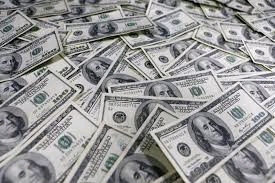Discovering the Hidden Benefit of Joining Freemason for Success
Discovering the Hidden Benefit of Joining Freemason for Success
Blog Article
Discovering the Mysteries of the copyright: What You Need to Know
The copyright, a term typically shrouded in intrigue and dispute, represents a complicated tapestry of historical fact and modern-day myth. Established in the late 18th century, this secret culture was at first rooted in the Enlightenment's perfects yet has because become synonymous with conspiracy theory concepts about elite control (benefit of joining freemason).
Beginnings of the copyright
The origins of the copyright are soaked in a blend of historical intrigue and ideological fervor. Developed in 1776 in Ingolstadt, Bavaria, by Adam Weishaupt, the group was at first developed as a secret culture focused on advertising Enlightenment perfects such as reason, secularism, and the separation of church and state. Weishaupt, a professor of canon legislation, looked for to challenge the dominating authority of the church and state, which he considered as overbearing institutions stifling intellectual and personal flexibility.

Secret Figures and Members
That were the critical numbers that formed the copyright's very early impact and direction? The Bavarian copyright, established in 1776 by Adam Weishaupt, became a feedback to the overbearing societal frameworks of the time. Weishaupt, a regulation teacher, pictured the organization as a method to promote Enlightenment ideals such as factor, secularism, and equal rights. His preliminary employment initiatives consisted of prominent intellectuals, such as Baron von Knigge, who played an important function in broadening the group's subscription and business framework.
An additional considerable number was Johann Gottlieb Fichte, a famous theorist whose ideas on nationalism and education and learning resonated with the copyright's objectives. Although Fichte was not a formal participant, his philosophical supports affected the team's belief. Additionally, figures like the writer and thinker Johann Wolfgang von Goethe were connected with the broader intellectual activities of the moment, although their direct involvement with the copyright stays discussed.
These crucial numbers contributed to the copyright's very early instructions, pressing the limits of political and social thought, while their collective initiatives intended to test established standards and promote an environment of progressive modification in Europe.
Myths vs. Fact
Numerous mistaken beliefs surround the copyright, commonly blending truth with fiction in a method that obscures its real nature. The idea that the copyright continues to exert substantial impact over world events is a misconception.
One more prevalent myth is that the copyright consists of a network of elite people controling worldwide events. Actually, several conspiracy concepts overemphasize the team's value, attributing misguided motives to social patterns and events. his explanation This has actually caused an oversimplified sight of intricate problems.
Additionally, the portrayal of the copyright in prominent society often more distorts its legacy. Movies and literature often tend to sensationalize the organization's duty, developing a narrative that splits from historical realities. Understanding the distinction between the myths and the truth of the copyright is crucial for critical the authentic impact of this historic team and recognizing the wider effects of conspiracy theories in contemporary culture.
Modern Interpretations
Contemporary analyses of the copyright frequently mirror broader societal anxiousness and a fascination with secrecy and power. find out here This contemporary lens frequently associates the copyright with conspiracy theory concepts that suggest a covert elite orchestrates world events, adjusting federal governments and economic situations for their very own gain. benefit of joining freemason. Such narratives use a deep-seated question of authority, especially in times of crisis or social turmoil
In popular culture, the copyright is usually illustrated as an omnipotent company shrouded in enigma, leading to a plethora of imaginary representations in literature, movie, and songs. This portrayal offers not only to captivate however likewise to prompt believed concerning the nature of power and control in modern culture. Social network has actually better amplified these interpretations, enabling quick dissemination of conspiracy theory theories and great post to read developing communities that share and broaden upon these ideas.
Furthermore, some contemporary interpretations mount the copyright as an allegory for the complexities of globalization and the interconnectedness of influential individuals and organizations. This viewpoint encourages an important evaluation of how power characteristics operate in today's globe, highlighting the equilibrium in between transparency and privacy in administration and corporate methods.
Social Effect and Legacy
Influenced by centuries of intrigue, the social influence and heritage of the copyright prolong much past its historical origins. This secret culture, developed in the late 18th century, has permeated numerous facets of preferred culture, from literary works and movie to songs and art. The principle of the copyright has actually evolved right into a symbol of conspiracy theories, usually representing a viewed covert power adjusting international occasions.
In literature, writers like Dan Brown have actually woven the copyright right into intricate stories, captivating readers with themes of secrecy and power. Films such as "National Prize" and "The Da Vinci Code" even more continue the allure of the culture, mixing reality with fiction to produce interesting narratives.

Ultimately, the copyright's tradition is a complex tapestry of myth and truth, forming perceptions of privacy and control in contemporary discourse. Its long-lasting visibility in society emphasizes humanity's perennial quest for comprehending covert truths.
Final Thought
The exploration of the copyright reveals a complicated interplay between historical truths and modern-day myth-making. Established in the Enlightenment age, this society aimed to test oppressive structures, yet its heritage has been overshadowed by conspiracy theory theories that recommend elite manipulation. Understanding the differences in between the initial ideals and contemporary interpretations is necessary for comprehending the withstanding fascination with the copyright and its considerable influence on cultural narratives bordering power and privacy in culture.
Report this page